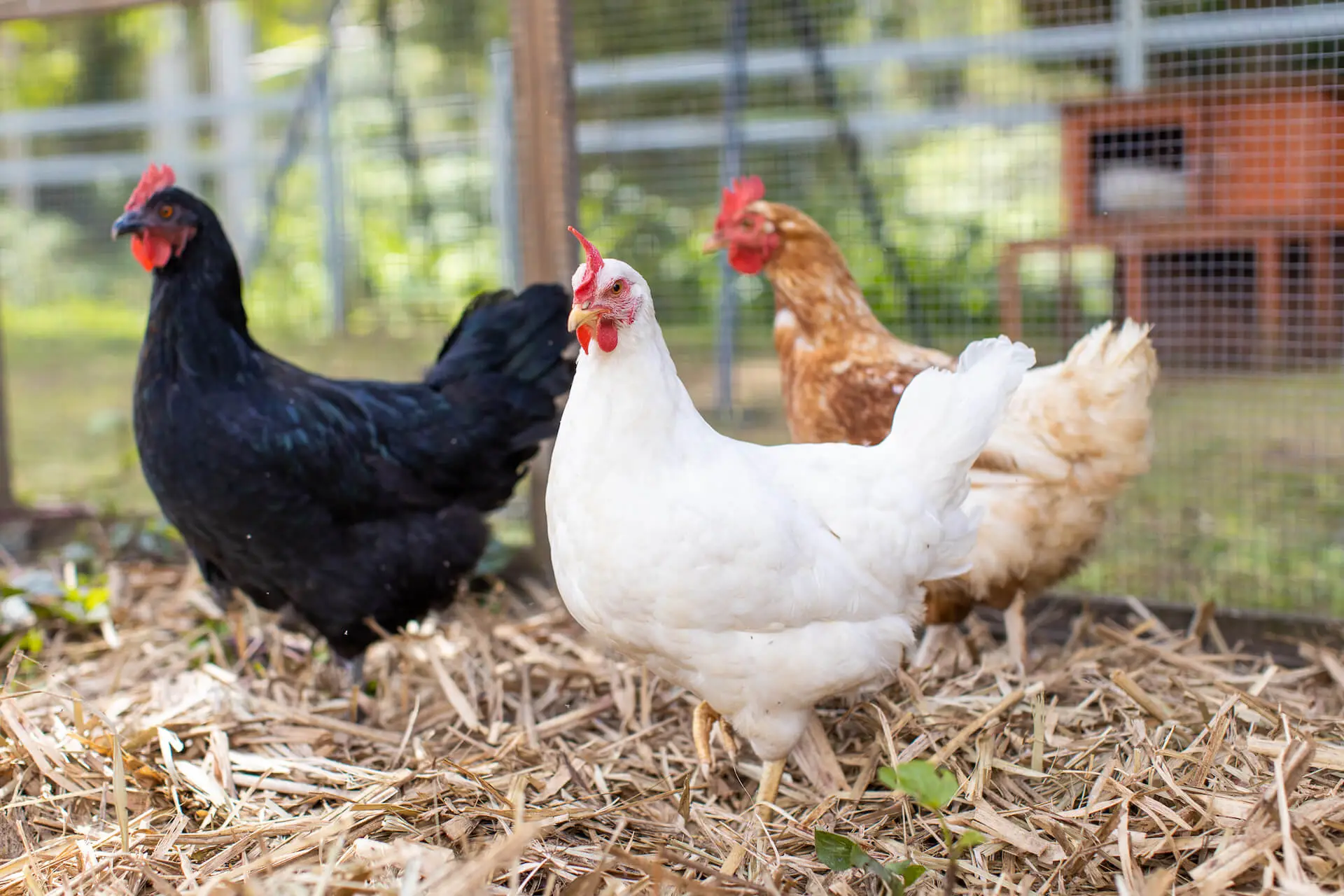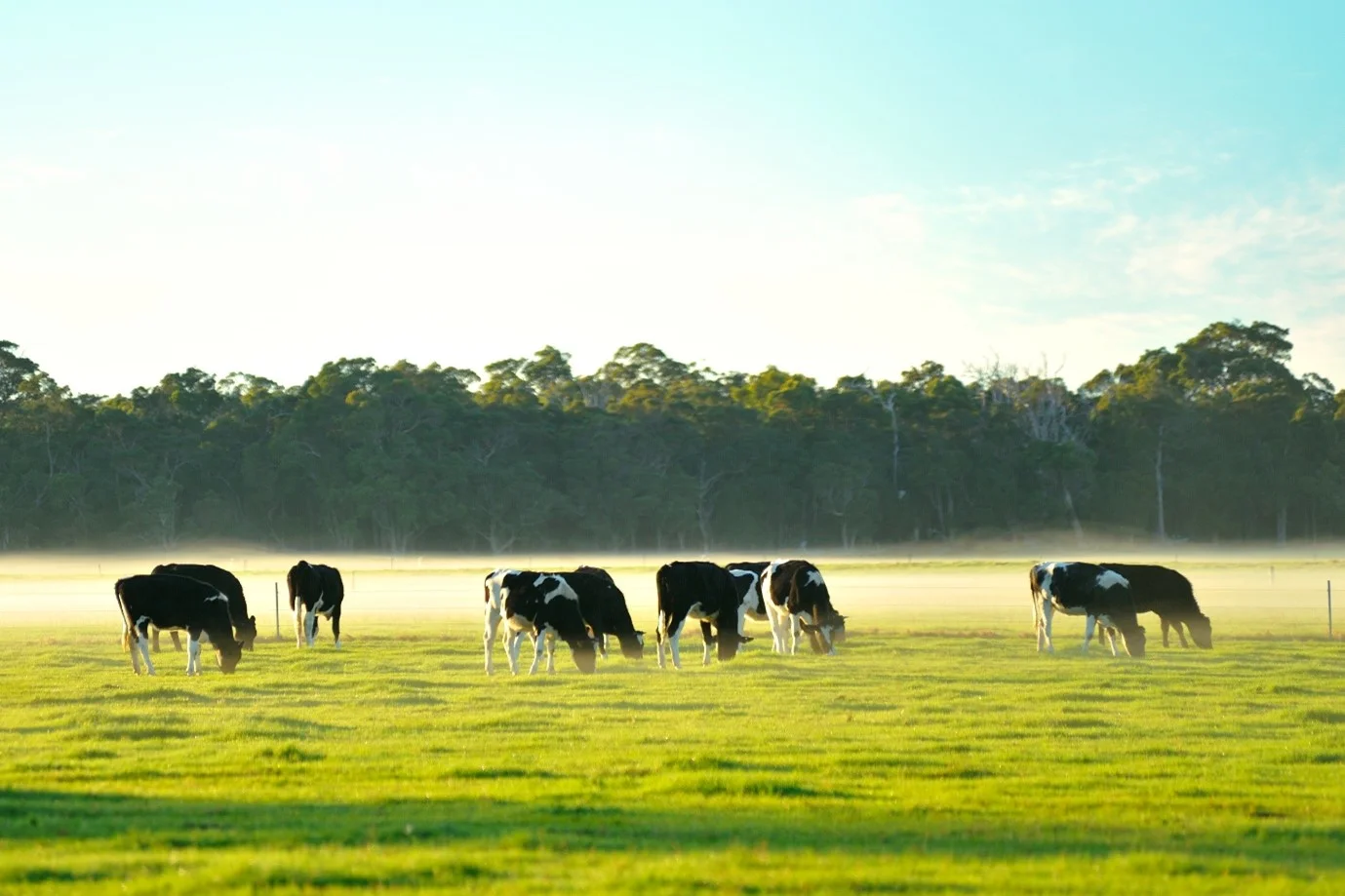Introduction
Animal welfare has always been a priority within the organic industry. This is reflected in the stringent grazing and minimum area requirements that are designed to allow animals to follow natural behavioural, social and reproductive tendencies[1].
Organic operators must ensure animal welfare is upheld to the guidelines of Australia’s National Standard for Organic and Bio-Dynamic Produce (The National Standard). The Australian Certified Organic Standard (ACOS) is also used by producers as a standard for organic livestock, encompassing further detail on treatment of livestock[2]. Due to the limited market access of this standard[3], Australian organic producers also must adhere to the animal welfare requirements of any relevant international standards if there is no government-to-government equivalency arrangement in place[4]. This is to ensure the most optimal conditions for all livestock within organics.
Organic products are one end of the spectrum in reducing unnecessary veterinary inputs within livestock production. Accordingly, the priority of organic animal productions is first and foremost providing the right conditions to ensure optimal health of the animal, however, medical procedures may still be required as part of meat production systems. Appropriate pain-relief for such procedures is an integral part of the animal welfare of animals. The livestock industry is working towards 100% use of pain relief for all procedures by 2030 and the organic industry will be at the forefront to support these changes and work with stakeholders to ensure pain relief requirements are applicable to organic livestock. Organic livestock experience conditions much different to their non-organic counterparts, which is a key point of difference for conscious consumers. The benefits to humans, animals and the environment brought about by organic production are wide-reaching, and it’s AOL belief that these advantages can be expanded with continued improvement in how organic livestock are treated.
Finding the balance between animal welfare, usage limitations of many prescribed pharmaceutical painkillers, and maintaining the integrity of organic livestock with regard to international specification remains an ongoing challenge for the industry. AOL is working with industry stakeholders to improve options for pain relief across the organic livestock industry.
Legislation and Australian Animal Welfare Standards and Guidelines
In Australia, animal welfare is legislated via the states and territories. For reference, please see the corresponding legislation in each state and territory.
| State/Territory | Legislation |
| Australian Capital Territory | Animal Welfare Act 1992 |
| New South Wales | Prevention of Cruelty to Animals Act 1979 |
| Northern Territory | Animal Welfare Act 1992 |
| Queensland | Animal Care and Protection Act 2001 |
| South Australia | Animal Welfare Act 1985 |
| Tasmania | Animal Welfare Act 1993 |
| Victoria | Prevention of Cruelty to Animals Act 1986 |
| Western Australia | Animal Welfare Act 2002 |
Legislation across each state and territory is guided using the Model Code of Practice for the Welfare of Animals (the Model Code). However, the Model Code is set to be replaced by the Australian Animal Welfare Standards and Guidelines (the Standards)[5]. The standards are being introduced across each jurisdiction with the process expected to be finalised in 2023 to harmonise the legislation across different States and Territories[6]. Currently, legislation between different states and territories is not consistent, which is set to be resolved by these changes. .
The Australian Animal Welfare Standards and Guidelines (AAWSG) were prepared by industry and have been designed to encompass the different animals that make up the livestock industry, as well as the treatment of these animals in land transport, saleyards, and depots[7]. The AAWSG have been developed over time through a regulatory impact statement process designed to create standards suitable for different livestock across the agriculture industry. The AAWSG provides the basis for the development and implementation of consistent legislation and enforcement across Australia[8]. The legislation developed by each state and territory has been informed by the AAWSG and its predecessor, the Model Codes of Practice for the Welfare of Animals (MCOP). Each individual guideline included public consultation open for industry comment from any other stakeholders with an interest in that specific family of livestock. Each individual standard was developed via this process.
While the submission process was open to the public, there was a lack of input from the organic sector as organic livestock operators were not approached for comment. Therefore, the final documents prepared fail to consider perspectives from the organic industry such as concerns around transporting of animals and placement at saleyards and depots. The lack of organically certified depots make it difficult to house organic livestock during transport. This is an issue for organic producers who are forced to move livestock longer distances to maintain the organic status of their livestock. This can lead also to stress on livestock due to increased travel times. While the National Standard defines the responsibilities of organic farmers to their livestock, there needs to be an opportunity to link the National Standard with the AAWSG.
However, while states and territories are responsible for animal welfare, sections of the legislation referencing welfare of animals for live animal export fall under the Federal Government, as it is the Federal Government who hold responsibility for trade and international agreements[9]. Therefore, having a consistent mechanism across the states and territories is an important part of maintaining sound practices and interpretation of animal welfare across Australia. Australian Organic Limited believes there are opportunities to help strengthen these standards as the industry continues to grow, whether it be by providing reference to the relevant National Standard sections, or inclusion of requirements for transport and welfare of organic livestock within each sector standard. This is to ensure livestock across each sector of agriculture are treated with care and safety and produced in environmentally sustainable ways.

As these frameworks are designed for non-organic livestock, the stewardship of livestock on-farm is a major concern for organic operators, particularly with regard to pain-relief. While operators will not lose their organic status if they use anaesthetics to treat livestock who have required surgical treatments, such as the procedures listed under 1.18.3 of the National Standard, they are still required to use treatments highlighted under the National Standard[10].
The National Standard highlights the requirements relating to livestock and livestock products in Appendix D[11]. As with all products under the National Standard, any treatment that uses GMO methods is prohibited from being used in the treatment of livestock.
Finding the balance between treatment of animals and the principles of the National Standard can be difficult for many organic operators, and this is something that AOL is continuing to address as it works with government and industry to improve pain relief options for organic livestock operators. Treatments that are developed to serve organic operators will also help benefit conventional livestock farmers.
In comparison, non-organic farming uses practices that are not applicable for animals raised organically. Methods such as feed lotting for pigs and cattle, tail docking of pigs, and battery farming of chickens are not allowed under organic standards. The table below highlights the practices that are not permitted when raising organic livestock[12].
| Livestock Practice | Non-Organic | Organic |
| Feed Lotting – Pigs | Yes | No |
| Tail Docking – Pigs | Yes | No |
| Sow Stalls – Pigs | Yes | No |
| Farrowing Crates – Pigs | Yes | No |
| Battery Farming – Hens | Yes | No |
| Hormones and Growth Promotants – Hens | Yes | No |
| Feed Lotting – Cattle | Yes | No |
| Hormones and Growth Promotants – Cattle | Yes | No |
For more information, please click here to read about non-organic practices that are not allowed under the Australian Certified Organic Standard and the National Standard, as well as benefits of organic livestock practices for the environment, humans and the animals themselves.
Australian National Standard and Overseas Comparisons
The National Standard has been in place since 1992 and was last updated in late 2022. While the National Standard continues to be the pre-eminent standard in Australia, updates to other international Standards, particularly those stemming from the European Union and the United Kingdom, may necessitate the Australian National Standard to be refined. AOL has undergone side-by-side comparisons and presented suggested updates to the National Standard to ensure continued access for Australian producers.
The National Standard is comparatively a brief document compared to other private and international standards. As such, practices such as minimum indoor space for beef cattle are not specified within this document as all cattle are naturally free ranging all year round due to Australian climatic conditions. AOL supports the Government direction to update the National Standard to help solve these discrepancies and clarify the excellent animal welfare of organic producers. This will enable acceptance of these discrepancies based on the different climatic conditions faced by organic operators in Australia and the United Kingdom/European Union, as well as future market equivalence opportunities.
AOL is working with the Australian Government and the Department of Agriculture to solve the gaps which currently exist. Through this work, AOL and the Department of Agriculture have both called for updates to the National Standard and we will continue to work with the Department to ensure these changes are made.

Summary
Animal welfare is one of the main reasons why consumers choose certified organic products. Domestically, the (ACOS) is one of few food standards that addresses the welfare of all animals involved in organic food and fibre production.
The ACOS has specific animal welfare requirements for all aspects of livestock production from the moment the animal is born. This involves specific regulations for pasture access, proactive preventative management, low stress handling, management procedures, transport and slaughter.
Pain relief for organic livestock remains an important issue and AOL is collaborating with industry stakeholders to help inform ways to improve treatment of organic livestock destined for the export market. AOL recognises the importance of animal welfare to consumers of organic livestock products, as well as the broader industry, and is determined to ensure Australia’s organic livestock meets the expected standards.
List of References
[1] Australian Organic Limited 2022, Organic Livestock Production, Australian Organic Limited, viewed on 22 June 2022, https://austorganic.com/organic-livestock-production.
[2] Australian Certified Organic Standard 2022.
[3] Department of Agriculture, Fisheries and Forestry 2022, Organic and bio-dynamic goods, Australian Government, viewed 19 January 2023, https://www.agriculture.gov.au/biosecurity-trade/export/controlled-goods/organic-bio-dynamic/factsheet.
[4] Department of Agriculture, Fisheries and Forestry 2021, Organic and bio-dynamic goods, Government of Australia, https://www.agriculture.gov.au/biosecurity-trade/export/controlled-goods/organic-bio-dynamic/factsheet.
[5] Department of Agriculture, Fisheries and Forestry, 2021, Australian Animal Welfare Standards and Guidelines, Government of Australia, viewed 21 June 2022, https://www.awe.gov.au/agriculture-land/animal/welfare/standards-guidelines.
[6] Ibid.
[7] Australian Animal Welfare Standards and Guidelines 2021, About Australian Animal Welfare Standards and Guidelines, accessed 21 September 2022, https://www.animalwelfarestandards.net.au/.
[9] Department of Agriculture, Water and the Environment, 2022, Animal Welfare in Australia, Government of Australia, viewed 22 June 2022, https://www.awe.gov.au/agriculture-land/animal/welfare/animal-welfare-in-australia#legislation.
[10] Department of Agriculture and Water Resources, 2022, National Standard for Organic and Bio-Dynamic Produce, Government of Australia, viewed 19 January 2023, https://www.agriculture.gov.au/sites/default/files/documents/national-standard-edition.pdf.
[11] Ibid.
[12] Australian Organic Limited, 2022, Organic Livestock Production, Australian Organic Limited, viewed 12 September 2022, https://austorganic.com/organic-livestock-production/.